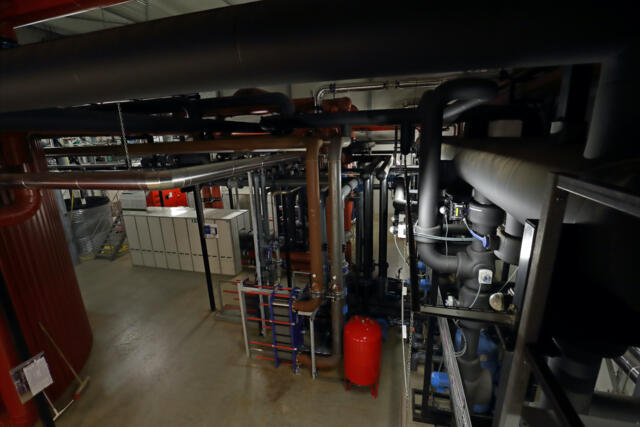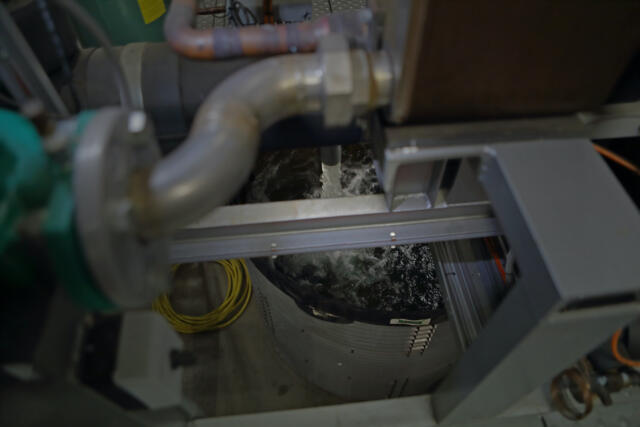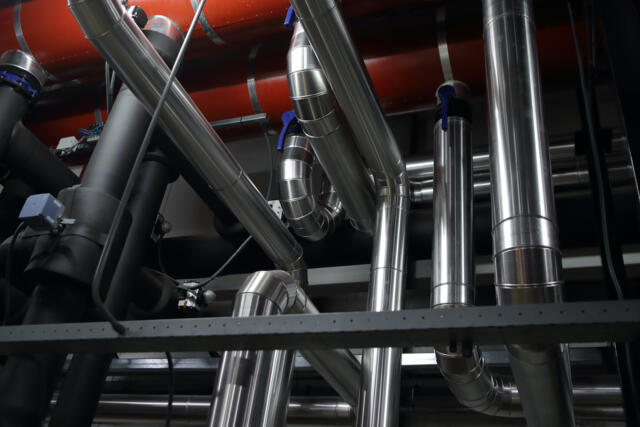
Heat and cold storage below ground, ATES
We aim to grow healthy products in a CO2-neutral way without using any fossil fuels. In this story we share how our underground heat/cold storage provides a basis to do so.
A tangle of pipes, How does it work
In 2010, a heat and cold storage system was installed in collaboration with Certhon. That year we expanded our acreage with a semi-closed greenhouse. By keeping the windows of this greenhouse closed as much as possible, we can "harvest" the heat generated by the radiation in the greenhouse. This harvested heat can be used again during winter to heat the greenhouse.
We use four pairs of sources in the subsurface at a depth of about 150 meters, which are called heat and cold storage (ATES). These sources contain either cold water or "low-grade" heat of around 40˚C to cool-down or heat the greenhouse during the change of seasons. The heat from the sources can be efficiently upgraded with the help of heat pumps.
In the province of South Holland, where our greenhouses are located, the storage of heat in the ground is limited to a maximum temperature of 25°C. In order to be able to use its sources even more efficiently, we received permission to inject up to 40°C through a Green Deal.

A network of systems, All connected
The ATES offers the possibility to connect other greenhouse systems that produce heat and cold. In this way, we efficiently store all the heat and cold that we produce, so that it can be used later when necessary. For example, we harvest heat and cold from the greenhouse, via the LED cooling system, our table cooler, our energy roof, our neighbouring canals and the office.
A nice extra is that our ATES not only heats Koppert Cress, but also the houses on the other side of the street. In this way we and our neighbors can make use of sustainable energy.
